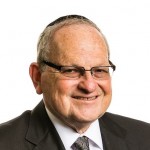The Four Sons Redefined
How do we excite our children about Judaism? This is a question most Orthodox parents will ask themselves at one time or another.
Interestingly, the Haggadah provides an answer. The authors of the Haggadah knew centuries ago what educational specialists have come to understand relatively recently—children are different and they learn differently. There are Four Sons, the Haggadah tells us, and each one represents a different kind of child who requires a different response, a different educational approach.
While the authors of the Haggadah identified certain timeless characteristics, I would like to ask the following: Who are the Four Sons of today? Having observed Jewish teens for decades due to my involvement with NCSY, I believe the Four Sons of contemporary society share some of the features of those sons in the Haggadah, but have different qualities as well.
First there is the Chacham. This is the child who is naturally drawn to Torah and Yahadut. Once he is introduced to the eternal teachings of Torah, he enthusiastically absorbs them. He is eager to learn and to teach others. One need look no further than our own cadre of NCSY advisors to find such young people—students who are highly motivated and inspired. These young men and women who travel around the country from Shabbaton to Shabbaton bringing teens closer to Yiddishkeit are the secret behind NCSY’s extraordinary success—they are the fire, the soul and the engine behind the movement. Similarly, I cannot help but be impressed by the wonderfully caring and devoted advisors involved in Yachad, our program for those with developmental disabilities. Our NCSY and Yachad advisors exemplify true devotion to the klal through their hard work and dedication.
The second son mentioned in the Haggadah is the Rasha. Perhaps this is the child who “went off the derech,” because we, as a community, labeled him a rasha. We all know young people like this. There are hordes of girls and boys who go “off the derech” because the Orthodox Jewish community failed them. But the Haggadah teaches us that all four of these children deserve a voice, a place at the table. Torah is concerned with all kinds of children. We are obligated to not give up on anyone.
The third son is the “Simple Son”—the Tam, in the language of the Haggadah. Who is the Simple Son of today? I believe this is the distracted son or daughter—the child who has become so fixated on technology, he has difficulty focusing on anything else. Is it hard to reach the distracted, plugged in teen of today? Hard, yes. Impossible, no. NCSY excels at reaching kids “where they are at.” If kids are online, we need to give them compelling and exciting online Torah content. (To the credit of the frum community, there is a wealth of engaging Torah online, geared for all ages, such as OU Torah [www.ou.org/torah] and NCSY education resources [education.ncsy.org], to name a few.) No one understands the teenage psyche as well as NCSY. And NCSY does a remarkable job connecting to teens on Instagram, Snapchat—wherever they are in the world of social media.
Finally, there is the fourth son: the She’aino Yodeya Lishol, the child who does not know how to ask. This is the assimilated child who lacks the background to ask even the most basic question about Yiddishkeit. How do we educate such a child? “At petach lo.” You initiate; you pose the question and provide an answer they can relate to, despite their lack of a Jewish education or background. We at the OU welcome Jewish teens and young adults of all backgrounds through our many and multi-faceted programs, from NCSY and JSU (Jewish clubs for public school students) to our Heshe & Harriet Seif Jewish Learning Initiative on Campus and our Israel Free Spirit-Birthright Israel programs. We strive through our dynamic, creative and exceptionally well-run programs to bring Jews closer to their roots and to their heritage.
Most likely these descriptions do not conform to what the authors of the Haggadah had in mind. But these “Four Sons” certainly exist in the Orthodox world of today, and it is our responsibility to understand who they are and what they need in order to be part of the Torah community.

